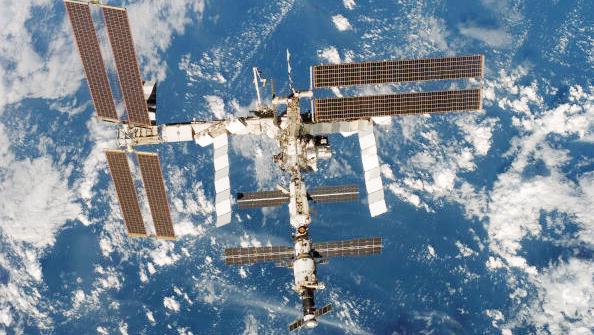Satellites could collide over Pennsylvania on Wednesday, space debris tracker warns
If the two decommissioned satellites collide, that could mean significant space debris
Two space satellites may collide over Pittsburgh on Wednesday, Jan. 29, according to the space debris tracking team at LeoLabs, Inc.
The satellites have been identified as the decommissioned space telescope IRAS (13777) that first launched in 1983 and the “experimental US payload” GGSE-4 (2828) that launched in 1967.
DIRECTV’S BOEING-BUILT SATELLITE COULD EXPLODE, COMPANY SAYS
The announcement was made Monday afternoon from the space watchdog’s Twitter account. LeoLabs wrote that it is monitoring the “close approach event” and that the satellites will be moving at around 9.1 miles per second at a height that’s 559.2 miles above the Pennsylvania city.
“On Jan 29 at 23:39:35 UTC, these two objects will pass close by one another at a relative velocity of 14.7 km/s (900km directly above Pittsburgh, PA),” LeoLabs noted in its second tweet. “Our latest metrics on the event show a predicted miss distance of between 15-30 meters.”
The predicted miss distance is under a mile.
TRUMP UNVEILS SPACE FORCE LOGO. WAS IT INSPIRED BY 'STAR TREK?'
LeoLabs highlighted the IRAS satellite’s size as a cause for concern since it is 11.8 by 10.6 by 6.7 feet. Additionally, the IRAS weighs over a ton, so any impact, if it did occur, could be significant. The GGSE-4 is much smaller in comparison, weighing in at around 10 pounds.
As decommissioned space crafts, the satellites are not in communication with a space station, thus making it nearly impossible for human intervention to prevent the potential collision.
“The combined size of both objects increases the computed probability of a collision, which remains near 1 in 100,” LeoLabs wrote in a follow-up tweet. "Events like this highlight the need for responsible, timely deorbiting of satellites for space sustainability moving forward."
FOX Business reached out to a representative at NASA about the matter but did not hear back in time for publication.
SPACEX TO UPDATE STARLINK SATELLITES OVER ASTRONOMER IRE
However, other space experts have offered input on the validity of LeoLabs' claims.
Space archaeologist Alice Gorman of Flinders University in Australia told the publication Science Alert that a collision between the two satellites could create a large amount of space debris.
"Such collisions have happened in the past for sure," she explained. "The thing that's really interesting about this one is that the estimated close pass within 15 to 30 meters is incredibly close. Spacecraft have taken evasive maneuvers to avoid things that are only within 60 kilometers [about 37 miles]. So this is a really, really close encounter.”
"I would say this is one of one of the most dangerous possible collisions that we've seen for some time," Gorman added.
Despite this statement, Gorman said the satellite collision is unlikely to harm Pittsburgh residents due to its velocity.
"They're going to be colliding at an incredibly high speed. And at that speed, it's going to probably cause the smaller satellite to break up completely into smaller fragments,” she explained.
GET FOX BUSINESS ON THE GO BY CLICKING HERE
However, increased space debris means an increased “risk of colliding with a functioning satellite." If some of the debris is not cleaned up in the next decade, it will become more difficult to launch satellites for space operations, according to Gorman.
| Ticker | Security | Last | Change | Change % |
|---|---|---|---|---|
| T | AT&T INC. | 24.36 | +0.29 | +1.20% |
| BA | THE BOEING CO. | 206.33 | -0.38 | -0.18% |
This news comes days after reports revealed a DirectTV satellite manufactured by Boeing is at risk of exploding after experiencing a battery malfunction in December.
Both companies are working to de-orbit and decommission the satellite before Feb. 25.




















